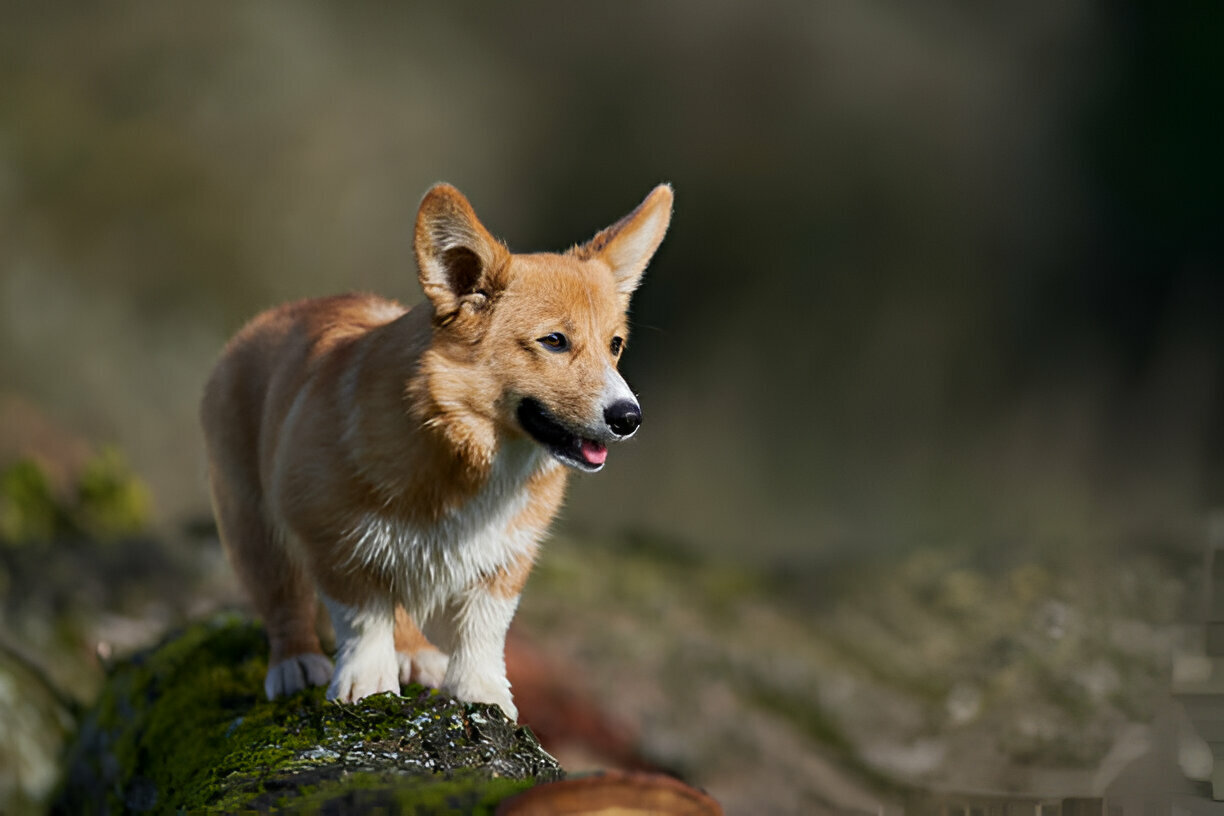German Shepherd Corgi mixes and blends two distinct breeds to create a surprisingly adaptable companion. Their size varies by a lot – and weighing between 25 to 70 pounds. These unique dogs pack plenty of personality into their frame. ranging from 12 to 24 inches tall
People call them Corman Shepherds, and they serve as excellent family pets because of their protective nature and playful personality. These intelligent and loyal dogs adapt well to apartment living with proper exercise, despite their mixed heritage. Our research shows they. The prices range from $200 to $750, making them an available option for families seeking a distinctive four-legged friend. typically live 10 to 15 years
This detailed piece explores everything you should know about this amazing hybrid – from their distinctive physical traits to their daily care needs.
Meet the Corman Shepherd: A Unique Mix
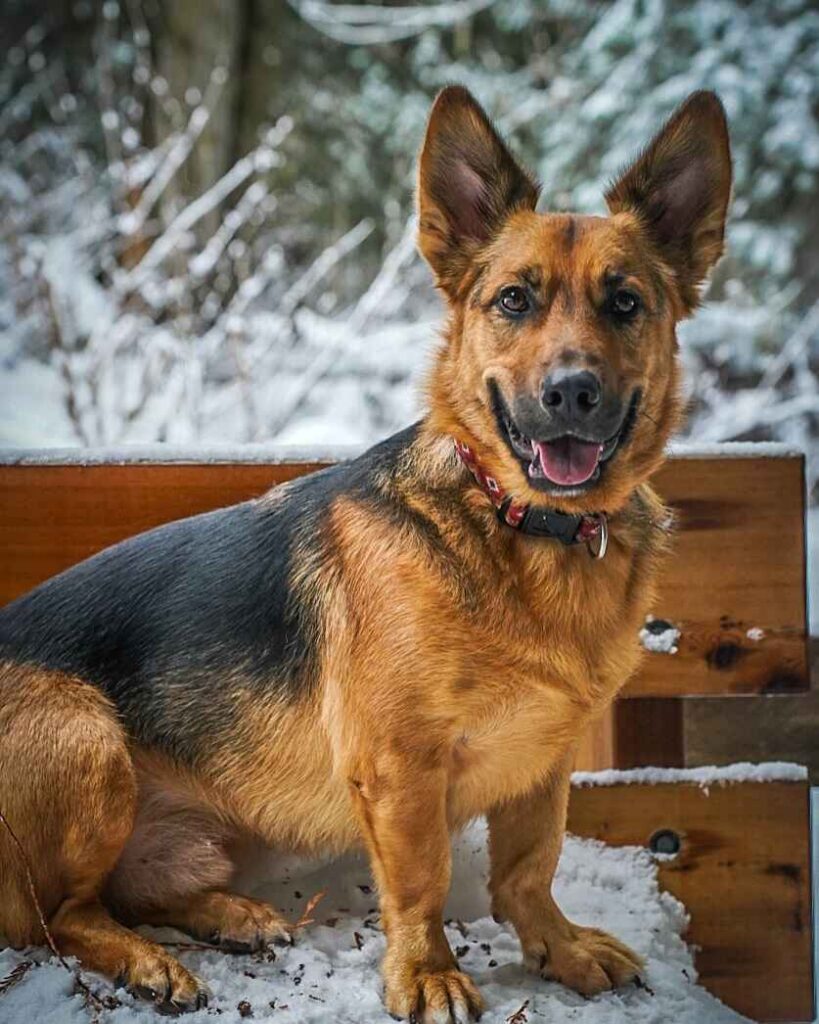
(Photo Credit: jesyerosychuk | instagram)
The Corman Shepherd came to life in the mid-1990s when designer dogs became popular in the United States. People also know this special mix as the German Corgi or German Shepherds. Both parent breeds passed down their strong work ethic to create something unique.
Origins of the breed
Breeders thought over how to mix the best qualities of both parent breeds to create the Corman Shepherd. The American Kennel Club doesn’t register this designer breed since it’s not a purebred dog. Dog lovers embraced this crossbreed because it captures the best traits from both family lines.
Parent breed characteristics
The German Shepherd’s amazing legacy as a versatile working dog shines through in this mix. Captain Max von Stephanitz developed these dogs in late 19th century Germany, and they excel in roles from police work to search and rescue operations. Their smarts, ease of training, and protective nature make them perfect family companions.
Welsh Corgis bring more than 1,000 years of herding heritage to this mix [link_2]. These energetic dogs served as farm companions and showed impressive:
- Skills in herding
- Ability to control pests
- Watchdog instincts
- Deep dedication to work
This special hybrid gets the German Shepherd’s smarts and protective nature along with the Corgi’s smaller size and friendly personality. These dogs often show their herding background by nipping at heels – a classic Corgi trait.
Corman Shepherds adapt well to different situations. They burst with energy but stay cool when they need to. These dogs love being with people and build strong bonds with their families. Smart and protective, they make great watchdogs while staying sweet and loving with family members.
Understanding the Breed’s Background
The creation of a Corman Shepherd uses complex breeding techniques that lead to interesting ethical debates. We used instead of natural mating because the parent breeds have such different sizes.artificial insemination
History of crossbreeding
No one knows the exact origins of the Corman Shepherd. People believe these dogs first showed up in the mid-1990s in the United States, but we don’t have solid proof to back up this timeline. Designer dogs became hugely popular during the 1990s and early 2000s. Of course, celebrities showing off their hybrid pets helped boost their visibility.
Size plays a vital role in the breeding process. The while the male Corgi provides the genetic material. This setup exists because growing puppies need enough space in the uterus – a key factor that determines successful breeding. female German Shepherd serves as the mother
Breeding these dogs needs precise veterinary work. Breeders collect genetic material from male Welsh Corgis and use artificial insemination with female German Shepherds. This method creates debate among dog lovers – some think it’s unnatural, while others see it as a needed tool to breed responsibly.
The Corman Shepherd’s story shows us broader trends in designer dog breeding. The public discovered them in the 1990s, but experts think these crosses might have started earlier, maybe in the 1970s or 1980s. Designer breeds often take years to gain acceptance, as shown by the gap between their first breeding and widespread recognition.
Breeders want to mix the best traits from both parent breeds. They try to combine the German Shepherd’s protective nature with the Corgi’s compact size. This careful mixing creates dogs that fit various living situations while keeping both parents’ working dog heritage.
The Corman Shepherd gained popularity as Americans fell in love with designer dogs. Major kennel clubs don’t recognize them yet, but these dogs have many devoted fans who love their special mix of traits.
Physical Traits and Growth Stages
Corman Shepherds undergo fascinating changes as they grow from tiny pups into full-grown adults. These unique dogs mature through distinct stages that show specific physical transformations and growth milestones.
Puppy development milestones
The developmental trip starts when puppies focus on nursing and double their birth weight. Between 2-4 weeks, puppies stand up and their eyes and ears open fully. neonatal period, spanning from birth to 2 weeks
The socialization period runs from 3-12 weeks and brings remarkable changes. Puppies start eating dog food and develop their social skills by 5-8 weeks. Their ears stand upright around 8-12 weeks, which shows their German Shepherd heritage.
Adult size and appearance
A full-grown Corman Shepherd displays a unique blend of both parent breeds’ traits. These dogs stand and weigh between 25 to 65 pounds. Their body structure shows an interesting mix – the German Shepherd’s broader head and pointed ears combined with the Corgi’s short legs and long body 12 to 15 inches at the shoulders
Common coat colors and patterns
The Corman Shepherd’s dense double coat ranges from short to medium length. Their coat colors show an impressive variety:
- Gold with brown undertones
- Black and white combinations
- Tan markings
- Traditional German Shepherd patterns
These dogs need regular grooming since they shed heavily throughout the year. They inherit dark, almond-shaped eyes and an erect ear structure that matches their German Shepherd ancestry.
During adolescence between 6-18 months, they reach their full body weight and height. Smaller Corman Shepherds ended up completing their growth by six months, while medium-sized ones might continue growing until they’re about two years old.
Personality Traits That Shape Their Character
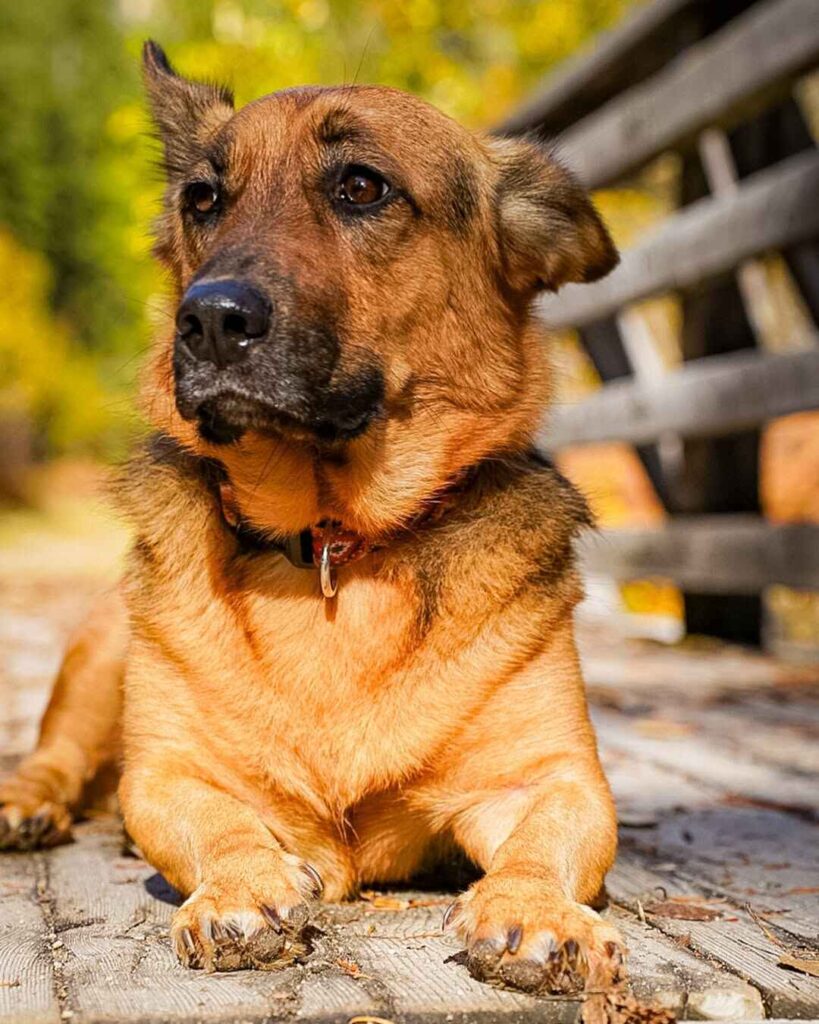
(Photo Credit: jesyerosychuk | instagram)
A German Shepherd can express more with his tail in minutes than an owner can express with his tongue in hours.
Corman Shepherds are remarkable for their mental capabilities. They inherit the best cognitive traits from both parent breeds. These intelligent dogs can understand and memorize new commands and obey the first command 95% of the time.in fewer than 5 repetitions
Intelligence levels
Corman Shepherd’s intelligence shows through several key traits:
- Quick command acquisition
- Strong problem-solving abilities
- Natural curiosity and learning drive
- High trainability potential
- Exceptional memory retention
Without a doubt, these dogs love mental stimulation and excel in training activities. Their enthusiasm for learning makes them perfect candidates for agility training, obedience work, and other dog sports.
Social behavior patterns
Corman Shepherds create deep emotional connections with their family members. These devoted dogs bond intensely with their handlers and mirror their owner’s emotions and happiness. Notwithstanding that, their protective instincts can make them cautious around strangers, which means they need proper socialization early in life.
Well-trained Corman Shepherds are gentle and tolerant companions. Their sweet nature makes them fantastic family dogs that are especially affectionate with children and other pets. These dogs need regular human interaction because they don’t do well when left alone for long periods.
The breed’s protective nature is both a strength and something future owners should think about. Their alertness makes them excellent watchdogs, but their strong guarding instincts need proper management through early socialization and training.
Corman Shepherds are sensitive to criticism. These intelligent dogs respond best to positive reinforcement, as harsh corrections can hurt their training progress. Food motivation combined with their smarts makes treat-based training work well for shaping desired behaviors.
These dogs take social connections beyond simple interactions. They love being part of family activities and often stay close to their owners, always ready to participate. Their loyalty comes through in protective behaviors and constant companionship. They become true family members rather than just pets.
Training Your Corman Shepherd Puppy
Training a Corman Shepherd puppy requires understanding their intelligence and herding instincts. These puppies need well-laid-out guidance to channel their natural abilities in positive ways.
Early socialization basics
The for Corman Shepherd puppies runs from 3 to 14 weeks of age. Your original task is to expose your puppy to various experiences in controlled settings. Your puppy needs to meet: critical socialization window
- Different people (ages, sizes, ethnicities)
- Various environments and surfaces
- Common household sounds
- Other vaccinated pets
- New situations and experiences
We focused on making each interaction positive with treats and praise. Your best results come from starting socialization at 8 weeks. Take your puppy to busy areas while keeping a safe distance.
House training tips
A consistent routine creates the foundations of successful house training. Corman Shepherd puppies show excellent progress with a . Your puppy needs hourly outdoor breaks at 8-12 weeks. You can gradually increase the time between breaks as they grow older. structured schedule
Crate training is a vital part of house training success. The crate becomes a den-like space that taps into your puppy’s instinct to keep their sleeping area clean. You can also pick a specific outdoor spot for potty breaks to help build proper elimination habits.
Dealing with herding instincts
Corman Shepherds inherit strong herding tendencies from both parent breeds, which need careful attention. These instincts often show up as nipping at heels or trying to control how family members and other pets move.
You can redirect herding behaviors by:
- Creating structured games that simulate herding tasks
- Taking part in hosted herding activities when available
- Keeping regular exercise routines
- Working on impulse control training
Consistency in your training approach is significant. Stay calm when your puppy shows herding behavior and redirect their attention to appropriate activities. Patient guidance and positive reinforcement help channel these natural instincts into constructive behaviors that improve your bond with your Corman Shepherd.
Exercise Requirements By Age
Proper exercise is the lifeblood of a Corman Shepherd’s development. Your dog needs age-appropriate activity levels that will give the best growth and prevent joint problems.
Puppy exercise guidelines
A well-laid-out puppy exercise plan prevents overexertion and supports healthy development. The golden rule for Corman Shepherd puppies is, twice daily. This means: five minutes of exercise per month of age
- A 2-month-old puppy needs 10-15 minutes of daily physical activity
- By 4 months, exercise duration increases to 20 minutes per session
- At 6 months, puppies can handle 30-minute exercise sessions
- By 9 months, they’re ready for 45-minute activity periods
Your puppy’s joints and bones remain vulnerable to injury, so avoid strenuous activities during this stage. We focused on natural free running that lets puppies rest when tired. You can also add short training sessions and mental stimulation games to ensure balanced development.
Adult activity needs
Your adult Corman Shepherd’s exercise needs are a big deal as they need. Then, you should plan activities that include:90-120 minutes of daily exercise
Physical Exercise:
- Brisk walking or running sessions
- Playing fetch with balls or frisbees
- Swimming opportunities
- Agility training when appropriate
Mental Stimulation: Interactive toys are a great way to prevent boredom. The Omega Paw Tricky Treat Ball and Kong Classic Dog Toy are excellent options that keep your dog engaged. These toys help maintain both physical and mental well-being.
Breaking exercise sessions into smaller chunks throughout the day works best. Destructive behavior or restlessness might signal that your dog needs more physical activity. Senior Corman Shepherds, those over 8 years old, need modified exercise routines of about 30-45 minutes daily.
Note that these dogs need plenty of space to stay active. A home without a yard might limit their exercise opportunities. You can create small obstacle courses or organize structured play sessions to maximize available space.
Health Concerns to Watch For
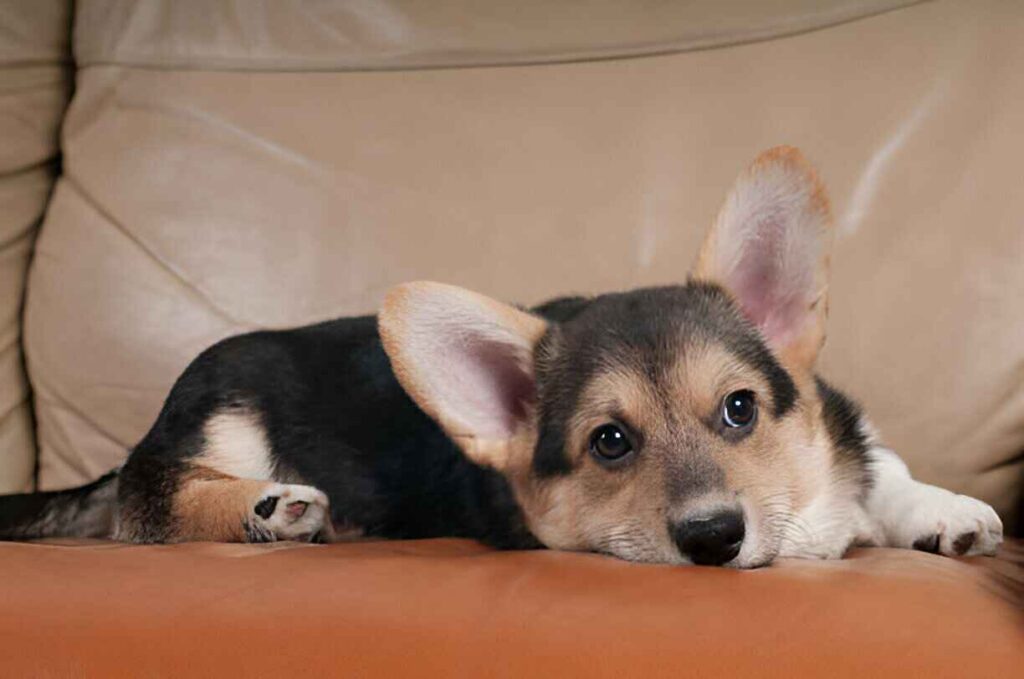
(Photo Credit: grase | istock)
Corman Shepherd owners need to understand their pets’ health concerns to give them the best care possible. These mixed-breed dogs get health tendencies from both parent breeds, so they need careful monitoring and preventive care.
Common genetic issues
Joint problems are among the most common health challenges. German Shepherds have elbow dysplasia affects 18.8% of the breed. Degenerative myelopathy affects 14.1% of German Shepherds and shows up in dogs between 8 and 14 years old.20.6% rate of hip dysplasia
These dogs need extra attention for back problems since they inherit the Corgi’s tendency toward spinal issues. Their unique body structure can lead to intervertebral disk disease that causes severe discomfort and mobility problems.
Bloat is a serious threat, with about 30% of affected dogs dying from it. The risk goes up 20% each year after age five. Eye problems like cataracts can start developing when puppies are just 8 weeks old.
Preventive care tips
Proper nutrition is the lifeblood of preventive health care. Your Corman Shepherd needs:
- Small, frequent meals to prevent bloat
- Foods rich in omega-3 fatty acids for eye health
- Supplements containing glucosamine and chondroitin
- Low-calorie treats to maintain healthy weight
Early detection of problems happens through regular vet check-ups. Weight management should be your focus since extra pounds increase joint problems and back pain. You can add joint-friendly exercises that don’t strain the spine too much.
Lifespan factors
Corman Shepherds usually live 10 to 14 years. Their lifespan depends on several things, including their genetic makeup. Good nutrition, regular exercise, and preventive care substantially affect their quality of life.
The environment plays a vital role in managing hip dysplasia. You can minimize joint-related issues by watching caloric intake and exercise levels. Like their parent breeds, these dogs need constant monitoring of their spine health rather than occasional check-ups.
Regular vet visits, proper diet, and the right exercise routines help your Corman Shepherd live longer and healthier. Screening for common genetic conditions lets you treat problems early, which can extend their life and make it better quality too.
Daily Care and Maintenance
German Shepherds only shed twice per year: January to June and then again July to December.
Your Corman Shepherd’s well-being depends on how much attention you give to grooming and nutrition. These mixed-breed dogs need specific care routines to stay healthy and happy.
Grooming needs
Regular brushing is the foundation of good coat maintenance. You should with a de-shedding tool like the Furminator. These dogs shed a lot, so it’s best to groom them outside.b rush your Corman Shepherd’s double coat 2-3 times weekly
Bath your dog every 8-10 weeks. Too much bathing will strip essential oils from their skin and might irritate them. You’ll need to clean their ears every two weeks with hypoallergenic baby wipes.
Your dog’s dental health needs regular care. Brush their teeth three times weekly. You can also use dental wipes or flavored dog toothpaste along with regular brushing.
Trim your dog’s nails monthly. Get your puppy used to nail clippers early so they’re comfortable with the process. Good nail care helps prevent mobility issues and lets them move comfortably.
Feeding guidelines
Your Corman Shepherd’s size and activity level determine their nutrition needs. A 20-pound dog needs about 1½ cups of food daily, while a 70-pound dog will need around 3½ cups. Break these portions into meals:
- Puppies (8-12 weeks): Three meals daily
- Adults: Two meals daily
- Seniors: Two to three smaller meals
Food quality matters just as much as quantity. Pick foods with high-quality protein and stay away from spicy ingredients that could upset their stomach. Keep an eye on portions since these dogs tend to gain weight faster.
Set regular feeding times and take away uneaten food after meals. Keep fresh water available during the day. When house training puppies, it helps to remove water overnight.
Look out for signs of bloat – a serious condition these dogs can get. Space out meals and exercise to avoid this problem. Joint health supplements with glucosamine and chondroitin are worth adding to their diet, especially since these dogs often have hip problems.
Finding Your Corman Shepherd
The decision to get a Corman Shepherd needs careful thought about several factors. You should know your options between adoption and purchase to find the right match for you.
Adoption vs buying
Shelter adoption comes with great advantages. The adoption fees range from USD 50.00 to USD 200.00. These fees usually cover your dog’s original vaccinations, spaying/neutering, and microchipping. We saved two lives when adopting from shelters – the dog we take home and another that fills its spot.
Buying from a breeder has its benefits. You’ll know your dog’s full lineage and health history. Breeders can also guarantee specific traits you want in your Corman Shepherd.
Choosing a breeder
Finding a good breeder needs a full picture of their operation. A responsible breeder should:
- Let you visit their facility and meet the parent dogs
- Give you complete health records
- Answer questions about their breeding practices
- Tell you about the puppies’ parents
- Show they care about where their puppies go
- Have proper documentation and health clearances
Stay away from puppy mills, pet stores, and “backyard” breeders. These places put profits ahead of the dogs’ wellbeing. Getting detailed health information is vital since Corman Shepherds aren’t registered with the American Kennel Club.
Cost considerations
Your Corman Shepherd’s price depends on where you get them. Adoption fees usually run from USD 250.00 to USD 350.00. Breeder prices range from USD 500.00 to USD 1200.00.
The purchase price is just the start. Here are other costs to think about:
First-year costs add up to USD 3500.00, including:
- Vaccinations
- Grooming appointments
- Quality pet food
- Pet insurance policy
Yearly costs after that run between USD 500.00 and USD 1500.00. Your dog’s lifetime care could cost between USD 47000.00 to USD 99000.00. This includes routine care, possible health issues, and daily needs.
Check your breeder’s reputation through references and visits before making your choice. Good breeders focus on health screenings and early socialization. Getting a Corman Shepherd is a big commitment that needs both emotional and financial dedication.
Living with a Corman Shepherd
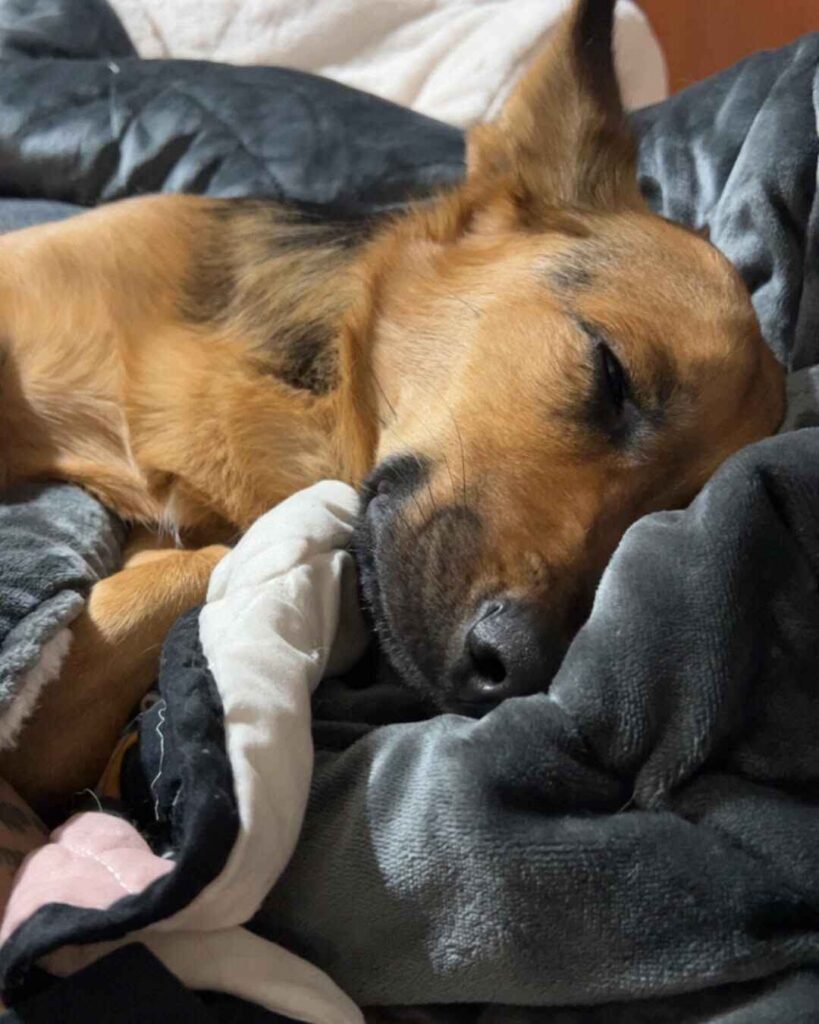
(Photo Credit: jesyerosychuk | instagram)
Life with a Corman Shepherd offers special joys that reshape your daily routine. These adaptable dogs feel at home anywhere, from big houses to apartments, as long as they get enough exercise and mental stimulation.
Corman Shepherds make perfect family pets. Their sweet and loving personality helps them bond with children, though you should watch them around very young kids as their excitement might be too much. These loyal companions love staying close to family members and are happy to join in whatever you’re doing.
Your Corman Shepherd’s happiness depends on living space. They can live well in apartments, but they need regular exercise to avoid becoming destructive. Daily Activity Requirements should include an hour of physical activity – walks, jogs, or backyard play. We noticed their need for exercise comes from both parent breeds’ working history, making regular activity a must for good behavior.
Living with a Corman Shepherd means knowing how to handle their social needs. They build strong bonds with their families but don’t deal very well with separation anxiety. Long periods alone can lead them to chew furniture or shred carpets. Time Management becomes significant since these dogs need regular human contact to stay emotionally stable.
A happy life with a Corman Shepherd comes from understanding their need for attention and exercise. Active people or families who can give time to their physical and emotional needs will find these dogs most rewarding. These loyal and loving pets quickly become cherished family members and enrich daily life with their unique character and steadfast dedication.
Conclusion
Corman Shepherds make remarkable family companions by combining German Shepherd and Corgi traits. Their distinctive looks draw attention, but their smarts and loyalty set them apart. These dogs thrive in different living spaces when they get enough exercise and mental stimulation.
Health issues can arise, but regular vet visits and preventive care help ensure these dogs live long, healthy lives. Their medium size and flexible nature work well in houses or apartments. They need regular physical activity to stay content and well-mannered.
Smart breeds like these need your dedication – from exercise routines to grooming and training sessions. Your effort rewards you with their steadfast dedication and love. Want to learn more about caring for your German Shepherd Corgi Mix? Drop a comment below!
A Corman Shepherd brings a devoted friend who adds joy, protection, and fun to your family’s life. Their mix of intelligence, adaptability, and loving personality makes them perfect for active families ready to commit long-term.
FAQs
1. What are the typical personality traits of a Corman Shepherd?
Corman Shepherds are intelligent, loyal, and playful dogs that combine traits from both German Shepherds and Corgis. They are generally family-friendly, easy to train, and form strong bonds with their owners. These dogs are also known for their protective nature and alertness, making them excellent watchdogs.
2. How big do Corman Shepherds usually get?
Corman Shepherds can vary significantly in size due to their mixed heritage. They typically stand 12 to 15 inches tall at the shoulders and weigh between 25 to 65 pounds. The exact size often depends on which parent breed they take after more.
3. What are the exercise requirements for a Corman Shepherd?
Adult Corman Shepherds need about 90-120 minutes of daily exercise. This should include a mix of physical activities like walks, runs, or playtime, as well as mental stimulation through interactive toys and training sessions. Puppies require less exercise, following the rule of five minutes per month of age, twice daily.
4. Are there any specific health concerns for Corman Shepherds?
Corman Shepherds may be prone to certain health issues inherited from their parent breeds. These can include hip and elbow dysplasia, back problems due to their long body structure, and potential eye issues. Regular veterinary check-ups, proper nutrition, and maintaining a healthy weight are crucial for their well-being.
5. How much grooming do Corman Shepherds need?
Corman Shepherds have a dense double coat that requires regular maintenance. They should be brushed 2-3 times weekly to manage shedding, which can be considerable. Bathing is recommended every 8-10 weeks, and regular nail trimming and dental care are also important parts of their grooming routine.
